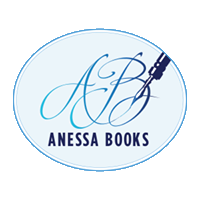Listen to this blog post by clicking on the arrow above ^.
 Who here is a statistics nerd? Come on… raise your hands, don’t be shy! If you love statistics or love looking at sales analysis for your books, I’ve got the greatest tool for you.
Who here is a statistics nerd? Come on… raise your hands, don’t be shy! If you love statistics or love looking at sales analysis for your books, I’ve got the greatest tool for you.
Okay, now, who here absolutely despises statistics? (This is me, raising my hand high.)
If you love statistics and looking at charts and graphs, you’re probably pretty good at marketing. It’s the key to good marketing—knowing what works. And the only way to know if a marketing strategy is working is to compare how much money you are spending on your ads vs how much money you are earning from your books.
You would think it would be that simple—just compare one number to another. Sadly, it’s not. Just because you spend $1 on advertising a particular book and earn $1 from the sale of that book, doesn’t mean it’s a one-to-one correlation. That book sale could have come from another source—just a random person searching around on Amazon. The dollar spent on advertising might have not sold the actual book you were advertising (because that one didn’t look as interesting as the person who clicked on the ad thought, but then they saw that you’d written another book that looked a lot more fun and they bought that one instead).
You never know!!
Not only that, but perhaps the book your advertising is the first in a series. How are the sales of the rest of the series? What are your “sell-through” numbers? In other words, do people who read the first book go on to buy the second, or the third? How do you know whether they do or not?
People who hate statistics (like me) usually don’t do so well at marketing because they may not stick with a marketing plan that is working because they don’t know that it’s working. Or, as is more likely, they stick with one that isn’t working because they don’t realize that it isn’t.
I have spent years throwing spaghetti at the marketing wall and seeing if it sticks. I try absolutely everything I can think of, everything I hear about. I’ve tried newsletter ads (like Bargain Booksy, The Fussy Librarian, and Book Gorilla). I’ve tried Facebook ads, Amazon ads, and Bookbub ads (the ads, and the featured deals, when I could get them). I’ve tried doing newsletter swaps, Facebook page takeovers… In short, I’ve tried everything! And my sales have always been mediocre. Why? Goodness only knows!
It might be my book descriptions. It might be my covers. It might be the graphics of my ads. I do not know and it’s frustrating as anything.
However, the one thing I haven’t tried is watching the statistics because I don’t know how to compile them.
So, Mer, is this leading anywhere? I hear you ask.
Why, thanks for asking! Yes, it is.
If you love statistics, you need to try the Author Helper Suite (this is an affiliate link). If you hate statistics and/or don’t know how to compile them (like me), then you need to try the Author Helper Suite.
It gathers your sales numbers (with a few clicks for Amazon, manually inputted for other websites). It gathers your ads numbers (a few clicks for FB and Amazon ads, others manually input). And it spits out graphs and charts galore. It tells you how many ebooks sold vs. KENP pages read (that’s if you have your book in Amazon’s Kindle Unlimited Program). It tells you whether your ads are profitable—comparing how many books sold to how many dollars spent on ads. It tells you how many books from each of your series have sold. It tells you your read-through rate by series. It gives you all the statics your little heart could want and many you might not even know what to do with.
I hate statistics. I hate marketing. But I have invested in a year of access to this website and we’re going to see if I can’t earn the money I spent on it back by using the information it’s giving me. I really think it’s going to be worth it.
If you’d like to check it out, click here (this is the same affiliate link as above), and best of luck to us all with our marketing efforts!
